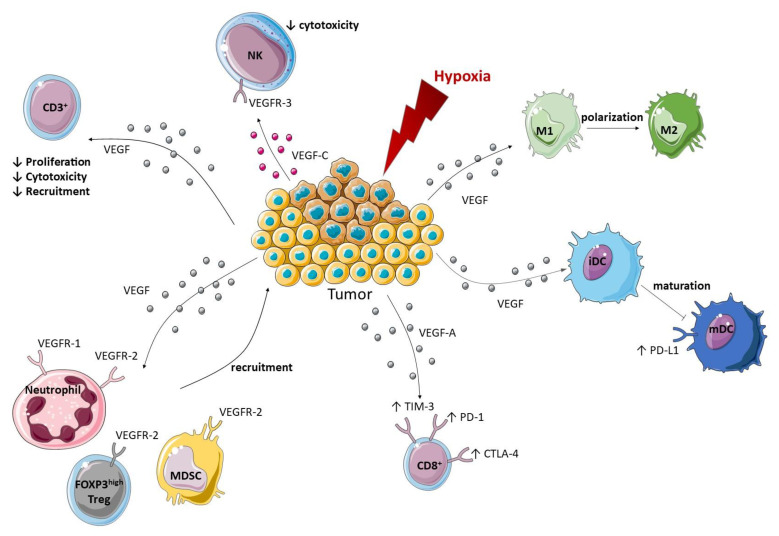Figure 3.
Modulation of the innate and adaptive immune response toward a pro-tumor immune environment by VEGF. An immunosuppressive tumor environment is set up by VEGF thanks to various mechanisms. The first one being the recruitment of neutrophils, Treg and MDSC to the tumor through their expression of VEGFR-1 or VEGFR-2. Polarization of macrophages into an M2 phenotype and inhibition of the maturation of DC by VEGF can also take place in the tumor. Moreover, VEGF up-regulates the expression of checkpoint inhibitors on DC and CD8+ T cells while VEGF-C/VEGFR-3 signaling pathway reduces NK cytotoxicity. Finally, VEGF can also reduce the proliferation, cytotoxicity, and recruitment of CD3+ T cells. Arrows signify an induction.

